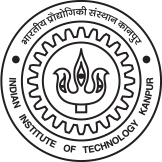
Prerequisites: CHM442
3-0-0-9
Course Contents
Molecular Symmetry in Chemistry
Symmetry – Introduction, Symmetry operations & elements, Groups,
Representations and character tables, Reduction of reducible representations,
Group-Subgroup relationships: Descent and ascent in symmetry. Degeneracies,
Direct products. Symmetry properties of Orbitals, Symmetry adapted
wavefunctions. (10 lecture)
Molecular orbital construction
H2, linear and angular H3, Linear, rectangular, square planar and tetrahedral H4,
pentagonal H5 and hexagonal H6.
Diatomic molecules A-A and A-B. Electronegativity perturbation.
Ligands with _-systems.
AH2, AH3, AH4, AH5 and AH6. Walsh diagram. (10 lectures)
Symmetry aspects of the d-orbital splitting by ligands.
Symmetry adapted orbitals on the ligands: s-interactions.
MH6 (Oh), MH5 (D3h and C4v), MH4 (D4h and C4v), MH3 (D3h and C2v).
Correlation.
Inclusion of p-orbitals: ML6
P-donor and P-acceptor ligands: MCl6 and M(CO)6 (10 lectures)
4. Applications:
Isolobal analogy, The Woodward-Hoffmann Rules – pericyclic reactions, Zeise's salt,
Metal carbonyls, Kubas complex W(CO)3(PCy3)2(H2), Agostic complex, Oxidative
addition and reductive elimination, Migratory insertion and b-hydride elimination,
Metal-Carbene complexes (Fischer, Schrock and N-heterocyclic carbene), Bimetallic
complexes: from Single to Quadruple/Quintuple bond, Magnetic interactions,.
(12 lectures)
Topics
Current Course Information
Instructor(s):
Number of sections:
Tutors for each section:
Schedule for Lectures:
Schedule for Tutorial:
Schedule for Labs:
Books and References
‘Orbital Interactions in Chemistry’ - Wiley-Interscience, 1st and 2nd Edition - Thomas A. Albright,
Jeremy K. Burdett and Myung-Hwan Whangbo
‘Molecular Orbitals of Transition Metal Complexes’ Oxford University Press - Yves Jean
‘Molecular Symmetry and Group Theory’ Wiley and Sons - Robert L. Carter
Chemical Applications of Group Theory, 3rd Edition – F. A. Cotton



